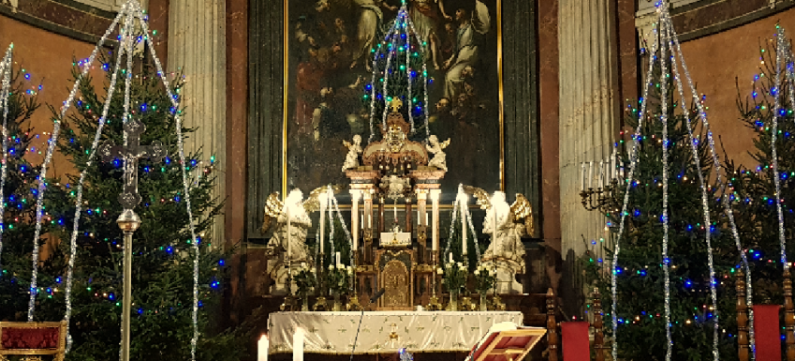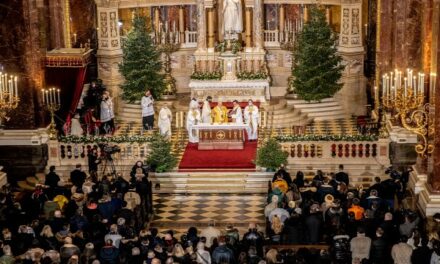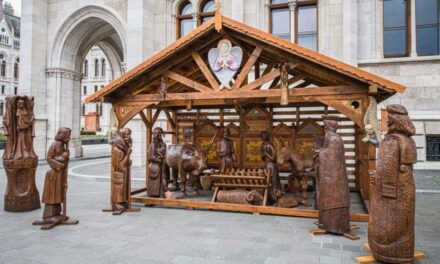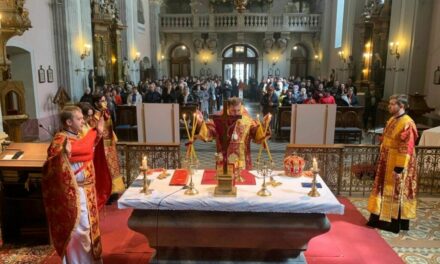On major Christian holidays, the leaders of the churches are more often seen either in their usual or more decorative attire. Among Catholics, as is well known, rank insignia can be seen from the hem of the reverend, the cingulus, (belt) collar, and the color of the biretta (headgear). For bishops, this color is bishop purple, for archbishops, purple, for cardinals, red, and for the pope, white.

Cardinal Péter Erdő's coat of arms
We often come across the coats of arms of their high priests, but we know less about how the coat of arms was formed and what the tassels surrounding the shields symbolize.
In the past, the high priests also took part in the battles and therefore had war hats. However, without the external coat of arms decorations, it was not visible that the wearer was a church person, so the liturgical decorations of the high priests began to be placed on the shield, behind the shield. The most important of these are: the bishop's glass, the shepherd's staff, the high priest's cross and the pallium. These were covered by the wide-flange, so-called "priest hat". So the helmet seen in the coats of arms was replaced by the priest's hat from the 15th century.
The priest's hat has a low, wide brim, secured against the wind by a string ending in a tassel under the chin. The color and number of the hat and tassels in the coat of arms show the ecclesiastical dignity of its owner. The hat is the most common coat of arms, because it appears not only in the coats of arms of the high priest, but also in the coats of arms of lower-ranking clergy. In the cardinal's coat of arms, you can see a red hat, 1-2-3-4-5, i.e. 15-15 tassels on both sides. The archbishop's coat of arms has a green hat, 1-2-3-4, i.e. 10-10 tassels on both sides. In the episcopal coat of arms, there is a green hat, 1-2-3, i.e. 6-6 tassels on both sides.

The number of tassels, the location of the cross, the miter and the shepherd's staff were initially conceptual, so the popes began to regulate the coats of arms of the high priests first, and then of the lower-ranking clergy. First, Pope Ince X regulated the cardinal coats of arms in 1650, then Pope VII. In 1659, Sándor created 21 rules regarding priestly coats of arms. It will become a requirement that the priest's coats of arms also indicate the position and rank in the church hierarchy. By the beginning of the last century, the rank insignia was definitively established by determining the color of the high priest's hat and tassels, as well as the number of tassels.
Source and illustration: katolikus.hu
(Header image: Roman Catholic Parish of Kecskemét)












